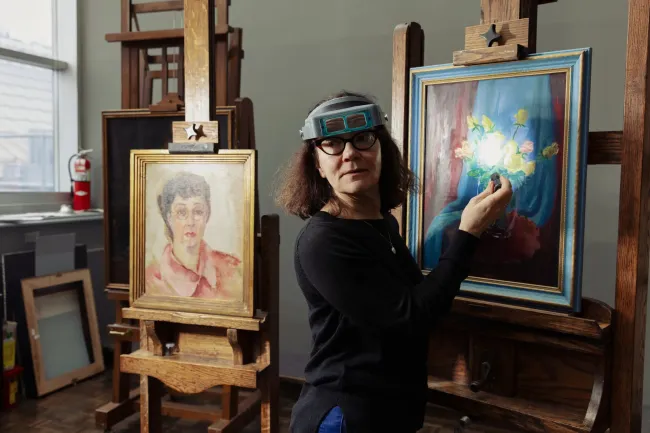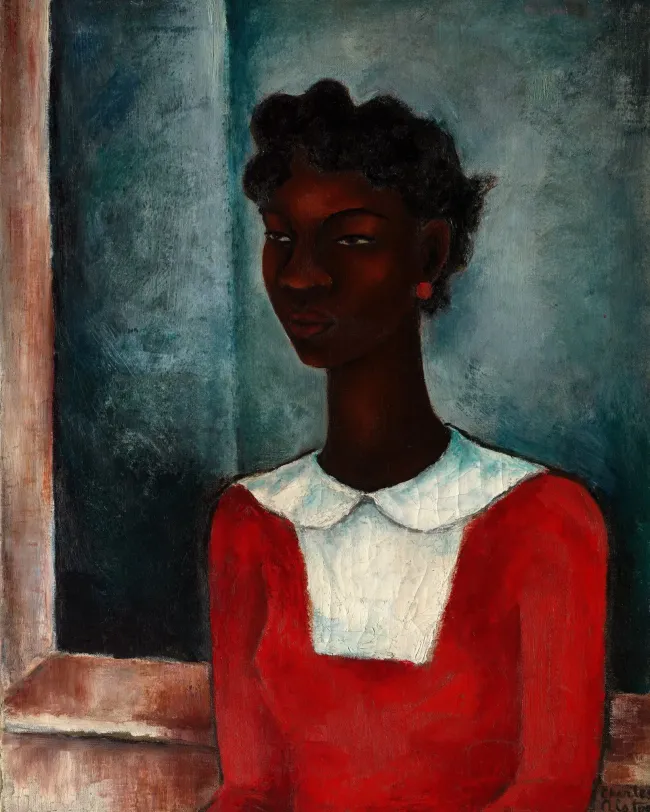Reclaiming the Renaissance: Harlem's Hidden Heroes Take Center Stage
Think about it, man. You can't talk about 20th-century America without mentioning Langston Hughes, Zora Neale Hurston, Louis Armstrong, and Duke Ellington. That's just basic, ya dig? These cats from the Harlem Renaissance, holding it down from 1919 to the late 1930s, they're like the OGs of American culture. Harlem was where it was at, the hub for Black creativity on a global scale.
But yo, what about the painters like Laura Wheeler Waring, Charles Henry Alston, and Malvin Gray Johnson? Or the sculptor Richmond Barthé? They ain't getting the recognition they deserve. Sure, some visual artists like Aaron Douglas and Jacob Lawrence get their props, but others? Nah, they've been pushed to the sidelines, seen as some side note to European and American modernism.
Enter this new exhibit, "The Harlem Renaissance and Transatlantic Modernism," popping off on Feb. 25 at the Met. They're aiming to flip the script, show how Harlem was lit AF during this era. Black artists were doing their thing, vibing with European avant-garde styles, and making moves on an international level.

Denise Murrell, the curator, she's on a mission to set the record straight. Back in the day, when she was studying art, ain't nobody talking about the Harlem Renaissance in them art history classes. But now, she's bringing it front and center. These Black artists were repping their own stories, defining themselves in a world that tried to box them in with stereotypes.
Locke, a key player in the Renaissance, was all about artists tapping into their African roots while also holding it down with European modernists. That's the vibe of this exhibit, showcasing around 160 pieces that span paintings, sculptures, photos, books, and more. Plus, they're throwing in some Euro modernist flavor to show how it was a whole global movement.

So, mark your calendars, fam. This exhibit is about to drop some serious knowledge and give these artists the shine they've been missing. It's gonna be lit!
Man, this ain't the first rodeo for the museum when it comes to Harlem. Back in '69, they dropped "Harlem on My Mind," cooked up by Thomas Hoving and Allon Schoener. Hoving was all about bringing in different crowds, and Schoener was known for his out-of-the-box exhibits diving deep into NYC history.

But here's the kicker: "Harlem on My Mind" had zero Black artists repping in it. Nada. Instead, they went all in on documentary shots, texts, and sounds to capture Harlem's vibe. Cue the outrage! Artists like Benny Andrews and Camille Billops hit the streets, picketing the museum day in, day out. They weren't playing around, catching the attention of the local news crews.
When asked about it, Murrell straight-up sighed. She wasn't brought in to fix that mess. The folks behind "Harlem on My Mind" were straight-up clueless, thinking there wasn't any fine art in Harlem worth showing. That's some serious racism right there, and it's history we gotta confront.

But it wasn't all bad. James Van Der Zee's work was a bright spot. Dude captured Harlem life like nobody else. Fast forward to now, the museum's partnering up with the Studio Museum in Harlem to showcase his stuff, including prints never seen before.
Now, let's talk about the real deal: the legacy built by Black institutions. The Met wasn't about collecting Black art until lately. Only 21 pieces in the upcoming show are from their stash. They had to call in favors, hitting up collectors and museums holding onto that Black modernist heat. Shoutout to places like the Schomburg Center and Howard University for holding it down with those collections.

And let's give props to the H.B.C.U.s too. These schools been holding onto gems from day one. Murrell had to hit up each campus herself, 'cause a lot of these museums ain't got the funds to go digital. But now, big-name institutions are recognizing the worth of these collections. It's about time, y'all.
Man, some of those hidden gems were just chillin' in artists' fam cribs, tucked away in attics and basements.
Roberta Graves had been hustlin' for years to get museums interested in her great-aunt Laura Wheeler Waring's work. Waring was a boss at painting classy portraits of the Black elite back in the '20s.

But peep this, Graves had been getting nada attention. She even had some museum tellin' her they'd be better off burning the stash. Straight-up disrespectful! But Graves wasn't having it. She linked up with another fam member, Madeline Murphy Rabb, despite some old beef between their families. Together, they were a force to be reckoned with.
Fast forward to when they met up with Murrell, the curator. There was some serious celebration goin' down in Rabb's Chicago spot. And now, Waring's getting her shine at the Met, with nine of her pieces in the mix.

Now, let's talk about appreciation. Murrell and her crew realized some of these loans needed serious TLC. The Met's got a squad of conservation wizards makin' these pieces pop again.
Check this out, they found a hidden gem under one of Waring's paintings. Infrared imaging and X-radiography uncovered a whole other portrait underneath. That's some next-level detective work!

Murrell's hyped for this show, and rightly so. It's not just about celebrating the past, it's about shaking up how we see history. And she's got big plans for the future too, making sure the Harlem Renaissance stays in the spotlight. It's all about giving props where they're due, and Murrell's leading the charge.


